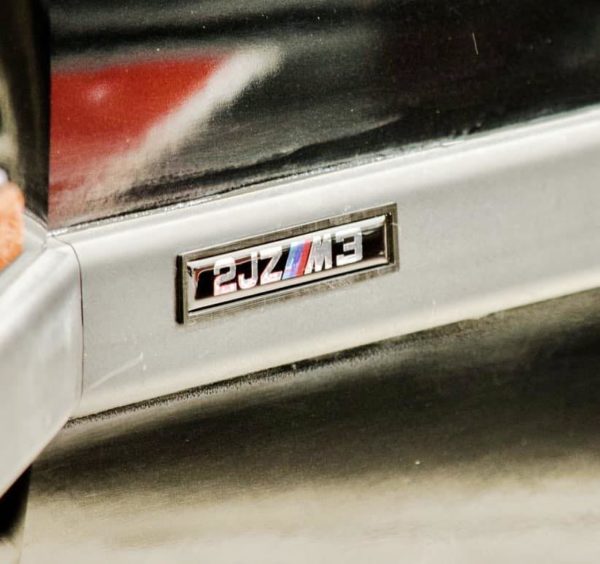Greg Banish

Welcome back, DIYAutoTune/AMPEFI crew! We’re thrilled to have Greg Banish, a seasoned expert and returning contributor, ( be sure to check out his other posts HERE ) share his insights in this article. Dive into the world of Lambda-based engine tuning as Greg guides us through the simplicity and efficiency it brings to the tuning process. Discover the universal reference point, learn about wideband sensor setups, and embrace a Lambda-based mindset for optimal engine performance. Let’s strap in, fire the engine up, and explore the science behind tuning with Greg Banish.

You’ve been lied to, and you liked it. For years, you have been reading about engines and repeating
smart-sounding things like “stoichiometry” and “14.7:1 is the balanced ratio”. You taught yourself to look for “12.6:1” from a naturally aspirated engine and “11.5:1” from a supercharged engine at WOT. Yep, you did it. You drank the Kool-Aid and proceeded to tell everyone that grape was the best flavor.
Greg: *laughs in engineer

Science, not Witchcraft
While I will admit that it’s most common to run a spark-ignited engine on “gasoline”. We should at least start this intervention by recognizing that engines can also run just fine on ethanol, methanol, natural gas (methane), propane, or hydrogen. The common connection between all of these is the hydrogens and carbons that make them up and are available to participate in combustion.
Whenever we are burning fuels, we generally like to avoid wasting fuel, We want it to have a mixture with the atmospheric air that introduces enough oxygen such that each hydrogen and carbon finds a partner and we only have H2O and CO2 going out the tailpipe. Sharp readers will remember this as the chemical stoichiometric balance. For any given fuel, there is some overall magic number that describes this balance when burning it with air (which carries about 20.9% oxygen content of its own).
Remembering this magic number is witchcraft I was talking about at the beginning. Most of us remember that “gas” is “14.68:1”, such an odd thing to commit to memory. What if I told you there was an easier way?
Remembering 1.00 is so easy, even an engineer can do it.
I can be terrible about remembering things. Birthdays, anniversaries, locker combinations, but the general chemical balance isn’t one of them. You see for me, the magic number is just “1”. That’s because I have joined the engineering cult of Lambda Lambda Lambda. I have chosen to use this unit while working instead of the chemical-specific stoichiometric points as I calibrate a running engine.
Lambda represents a thing called excess air ratio. What that really means is relative richness. It’s defined as the current air-fuel ratio divided by the stoichiometric reference for a given fuel. If I can define the reference point one time based on fuel chemistry, I can do all my other engine control work using this easier relative richness term. Most of the time the engine is running, we want to operate right on the balance point anyway, so finding a “1” is much easier for me than finding something odd like “14.68”.
Worse, that reference number moves again if the fuel chemistry changes. Even pump gas today is mostly e10 (10% ethanol), so what used to be 14.68 is now something more like 14.10. To me, in the Lambda cult, it’s still just “1.0” as long as I have accounted for the chemistry change in some other reference value. My base fuel map that defines my target air-fuel ratio remains set to 1.0 across most of the map.

Making the Math Easier
Using lambda makes solving for fuel corrections during the tuning process an absolute snap. When we were using units of raw air-fuel ratio, we used to solve for a correction factor by dividing our current AFR by the target AFR in order to figure out how much to change the table in question (usually the VE surface or MAF curve). Seeing a wideband reading of 15.4 made us do some offline math to see that [15.4/14.68] = 1.05 to know that we needed to increase the VE value by 5% (multiply by 1.05) to correct the situation. This, of course, also assumes that we had e0 pump gas and our wideband was configured with a reference stoich point of 14.68.
Wideband’s Dirty Secret
The dirty secret here is that no wideband actually sees “14.68”. What they see is percent oxygen, which is tied to lambda. The makers of cheap wide bands just multiply their raw reading by this familiar number so that users see something they were conditioned to like. What if the pump gas chemistry really was a balance of 14.1? You’re now an additional 4% off just because of the incorrect reference point. Bringing in the wideband signal in the raw units of lambda eliminates this measurement error.
Using our earlier example, looking at a raw wideband reading of lambda=1.05 lets us instantly know that we are 5% lean. This works regardless of the fuel chemistry. What we’re really doing is dividing the delivered AFR by the target AFR, both in units of lambda. [1.05/1.00]=1.05 The cool part here is basic division laws tell us that any number divided by 1.0 is the same number. See, so easy an engineer can do it in his head! It’s actually LESS WORK to use lambda once you get over the fear of new numbers on a display.
Enrichment Strategies

The only place switching to Lambda gets tricky is under enrichment. This is where the ingrained habits of looking for a specific number are hardest to break. Making a WOT run on the dyno, track, or street, we nervously look at our air-fuel ratio watching for some magic number to tell us that the engine is safe.
We have learned through repetition that a naturally aspirated engine should run somewhere near 12.5:1 on gasoline. But even looking for that number, it’s based upon the old-school notion that the stoichiometric reference point is 14.68:1. In truth, on the modern e10 pump gas, the raw number we should really be looking for is now actually 12.0:1. Again, the wideband is still tied to the old 14.68 ratio, so it shows the “12.5” we’re looking for, even when we are really 12.0:1 inside the engine.
Building a Lambda-based Mindset
Confused yet? If we’re going to learn to look for an oddball number in this case, why not just look for one that is more flexible with regard to fuel changes? Using lambda units, the ratio we would target in this case is λ=0.85. You trained yourself to look for “12.5”, you can train yourself to look for “0.85” too. It will just take a little repetition. The upside is that you build a skillset that survives a few curves being thrown at it with fuel chemistry.
So, you’re supercharged, no big deal. Instead of looking for 11.5:1, just learn to look for λ=0.78 instead. During your WOT run, simply replace your bailout ratio (where you would lift the gas pedal and abandon the run) of 12.2:1 with 0.83 instead. Again, it’s just a little training for your brain again. Print a copy of the conversion chart at the start of this article and tape it to the empty spot below your keyboard on your laptop. After seeing it enough times, it will eventually become second nature.
Wideband Setup is Key

Most good aftermarket wideband controllers will at least have the option to switch their display to units of lambda. More important than the displayed value is the logged value. Modern CAN-based wideband controllers usually broadcast in units of lambda. If you are forced to use the analog voltage-based output, the scaling back to lambda from AFR can be done when you define the transfer function in your logging software. Instead of having a range of 9.0-15.0 AFR, simply configure the logger for 0.62-1.10 Lambda across the same range of voltage signals.
As you watch our Calibrated Success training videos, you will see that we almost exclusively use units of lambda when talking about air-fuel ratio. It’s just easier and engineers like me are lazy. Yes, it may take a little time and effort for you to switch over, but the investment is totally worth it. We will welcome you to the cult with open arms.

